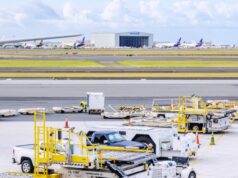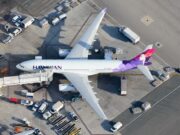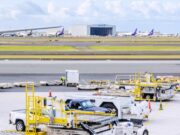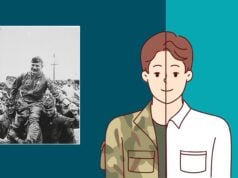
Over the last few months, the major airlines' formerly frantic pace of pilot hiring seems to have eased somewhat. United recently paused its hiring due to aircraft delivery delays. American, Southwest and Delta have all indicated they will hire fewer pilots in 2024, although American has stated it will continue to need about 1,300 pilots per year for the foreseeable future (Maharishi, 2024). But what does this mean from a big-picture perspective? Are these occurrences mere anecdotes, or are they indicators of a significant change in pilot demand? I’ve been asked variations on this question many times over the last few months, and several people who are considered authorities on hiring and retention have opined that the demand for pilots is waning.
I don’t agree.
First of all, I’ve seen many articles in industry publications and posts on social media (primarily LinkedIn) that dispute whether a pilot shortage ever existed in the first place. Airline unions lead the charge here, saying there is a pay shortage, not a pilot shortage, and plenty of pilots for the jobs that pay well. Keep in mind that these are the same organizations that have negotiated pay increases of 32% to 46% for their respective airlines, so it literally pays for them to have that attitude. My opinion is fueled by the concept of supply and demand, straight from Econ 101. If a particular commodity is in demand, the supply of that commodity is limited and the price for it increases. From 2022 to 2023, pilot compensation increased by an average of 12%, according to the NBAA Compensation Survey (NBAA, 2023). That’s more than twice the increase for all private-industry workers, according to the U.S. Bureau of Labor Statistics. That tells me pilots are in demand and the supply of them is limited. The numbers don’t lie.
But, when it comes to the state of pilot demand, we need to keep in mind that none of the basic conditions that created this state have changed:
- Airlines are still hiring, and some are expanding their fleets. Keep in mind that the recent record demand was largely fueled by the airlines having to replace the pilots they offered early retirement to or furloughed during the COVID-19 slowdown.
- Boomers, the oldest and still the largest age demographic in aviation, will retire in droves over the next five years, creating empty seats to fill.
- The military, which used to be the largest source of trained pilots, is far smaller than it was during the Cold War and will never produce pilots at the levels it did previously.
- Civilian flight training remains expensive, and the prices are only increasing. Although it will take less time to pay off training costs than it did previously, thanks to higher pilot compensation, a candidate still needs to be able to front the funds for their training, and that can often be well into six figures.
- Airline ab initio programs will not generate the output necessary to fill the gaps.
According to the latest version of the Boeing Pilot and Technician Outlook, the commercial fleet will grow 3.5% in 2024, and 649,000 new pilots will be needed over the next twenty years, the majority in Eurasia, China, and North America (Boeing, 2024). The study goes on to predict that the industry has “insufficient training capacity to support (this) significant personnel shortage” and “(t)o support the recovery and growth driven by the expansion of global fleets, the aviation industry will need a long-term strategy that addresses upcoming labor challenges” (Boeing, 2024).
In short, while the airlines’ demand for pilots may have tapered from the immediate post-pandemic high, the long-term steady demand that we were seeing pre-pandemic is still strong and expected to remain so.
On the business aviation side, in 2024, deliveries from the top-five OEMs are forecast to increase from 575 in 2023 to 670, surpassing the 652 new aircraft delivered in 2019. Leading this growth are new aircraft like the Gulfstream G700 and Falcon 6X (Lynch, 2024). These new aircraft will require pilots to fly them, and if we presume at least one crew per new aircraft, that’s a minimum of 1,440 seats to fill. The pilots will have to come from somewhere, and since new aircraft typically require more experienced crews, the likely place is from another operator. According to the 2023 edition of the Gallagher Aviation Compensation Survey, 49% of the respondent organizations had sustained some pilot turnover, with the majority of those operators losing personnel to either another operator or the major airlines (Gallagher, 2023). Interestingly, 12% of the losing organizations had pilots resign so they could retire, indicating that business aviation has its own retirement issues.
From an anecdotal perspective, there is rarely a day that goes by where I don’t see multiple position ads from aviation recruiters or management companies looking for pilots to staff new or existing accounts. In concert with those ads, I’ve seen extremely high demand for individual AirComp Calculator reports, usually purchased by those considering a new position.
In short, I don’t think the demand for pilots will significantly lessen any time soon, both in the commercial sector and in business aviation. Apart from a post-pandemic level set, none of the other conditions causing that demand have changed. Correspondingly, wage pressure for pilots in business aviation will continue to exist, and compensation levels will continue to be pushed higher. You may not like that, particularly if you’re an aircraft owner or operator, but it is the current reality, and it will remain that way for the foreseeable future.
Bibliography
Boeing. (2024, March 8). Pilot Technician Outlook: 2023 – 2042. Retrieved from Boeing.com: https://www.boeing.com/commercial/market/pilot-technician-outlook#overview
Gallagher. (2023). 2023 Aviation Compensation Survey. Quincy, MA: Arthur J. Gallagher & Co. .
Lynch, K. (2024, January 8). Jefferies: Bizjet Deliveries To Ramp Up with G700, 6X. Retrieved from ainonline.com: https://www.ainonline.com/aviation-news/aerospace/2024-01-08/jefferies-bizjet-deliveries-ramp-g700-6x
Maharishi, M. (2024, March 7). United Halts Pilot Hiring Due to Boeing Delivery Delays. Retrieved from Skift.com: https://skift.com/2024/03/07/united-halts-pilot-hiring-due-to-boeing-delivery-delays/
NBAA. (2023). 2023 Compensation Survey. Washington: National Business Aviation Association.







































































